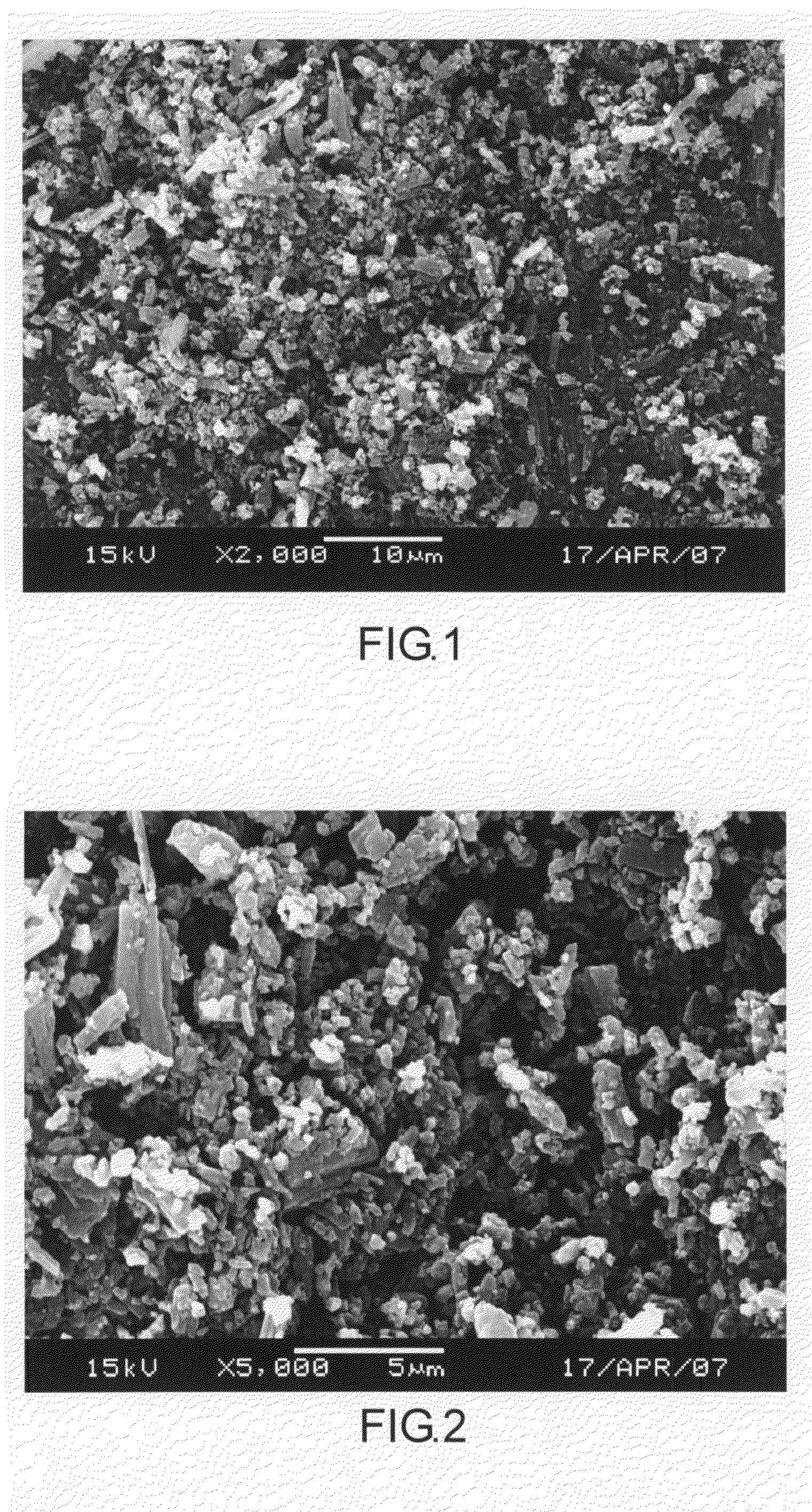Clarifying agent composition and manufacturing method thereof
- Summary
- Abstract
- Description
- Claims
- Application Information
AI Technical Summary
Benefits of technology
Problems solved by technology
Method used
Image
Examples
example 1
Preparation of 1,3:2,4-di(3-thenylidene)-D-sorbitol
[0073]A 1 litter four-necked cylindrical shaped reaction flask equipped with a thermometer, nitrogen inlet, and a mechanical stirrer was charged with D-sorbitol (20.0 g, 0.110 mole), methanesulfonic acid (1.00 g), 3-thiophenecarboxaldehyde (25.0 g, 0.223 mole) and methanol (200 ml) to form a reaction mixture. The reaction mixture was stirred at room temperature for 48 hours, neutralized to pH 8˜9 with a solution of 4% sodium hydroxide (NaOH) aqueous to form a precipitated product. The precipitated product was collected by filtration, washed with a solution of 40% methanol aqueous, dried and ground to give 1,3:2,4-di(3-thenylidene)-D-sorbitol as a fine white powder (29.2 g, yield 72%) having the following characteristics: a melting point of 237.0˜239.8° C.; 1H NMR (500 MHz, d6-DMSO) δ 7.49˜7.48 (m, 4H), 7.13˜7.08 (m, 2H), 5.68 (s, 2H), 4.81 (d, 1H, J=7.0 Hz), 4.38 (m, 1H), 4.13˜4.09 (m, 3H), 3.89 (s, 1H), 3.81˜3.71 (m, 2H), 3.63˜3.57...
example 2
Preparation of a Clarifying Agent Composition Containing 1,3:2,4-di(3-thenylidene)-D-sorbitol and an Organosilane Treated Fume Silica
[0074]1,3:2,4-di(3-thenylidene)-D-sorbitol was prepared like EXAMPLE 1 to form a precipitated product and an organosilane treated fume silica (3.0 g, CAB-O-SIL® TS720) was added to the precipitated product to form a mixture. The mixture is dried and ground to give a white powder (33.5 g) of high fluidity having the following characteristics: a melting point of 237.2˜240.1° C., an ash content of 8.1%. The prepared powder was observed with an electron microscope at magnifications of 2000× and 5000× as shown in FIGS. 3 and 4.
example 3
Preparation of 1,3:2,4-di(5-methyl-2-thenylidene)-D-sorbitol
[0075]A 1 litter four-necked cylindrical shaped reaction flask equipped with a thermometer, nitrogen inlet, and a mechanical stirrer was charged with D-sorbitol (20.0 g, 0.110 mole), methanesulfonic acid (1.00 g), 5-methyl-2-thiophenecarboxaldehyde (25.0 g, 0.198 mole) and methanol (200 ml) to form a reaction mixture. The reaction mixture was stirred at room temperature for 48 hours, neutralized to pH 8˜9 with a solution of 4% sodium hydroxide (NaOH) aqueous to form a precipitated product. The precipitated product was collected by filtration, washed with a solution of 40% methanol aqueous, dried and ground to give 1,3:2,4-di(5-methyl-2-thenylidene)-D-sorbitol as a fine white powder (27.3 g, yield 69.2%) having the following characteristics: a melting point of 209.5˜210.4° C., an ash content of 0.07%; 1H NMR(500 Hz, d6-DMSO) δ 6.90˜6.87(m, 4H), 6.68˜6.67(m, 2H), 5.78(s, 2H), 4.73(d, 1H, J=5.8 Hz), 4.35(t, 1H, J=5.8 Hz), 4.11...
PUM
| Property | Measurement | Unit |
|---|---|---|
| Fraction | aaaaa | aaaaa |
| Percent by mass | aaaaa | aaaaa |
| Percent by mass | aaaaa | aaaaa |
Abstract
Description
Claims
Application Information
 Login to View More
Login to View More - R&D
- Intellectual Property
- Life Sciences
- Materials
- Tech Scout
- Unparalleled Data Quality
- Higher Quality Content
- 60% Fewer Hallucinations
Browse by: Latest US Patents, China's latest patents, Technical Efficacy Thesaurus, Application Domain, Technology Topic, Popular Technical Reports.
© 2025 PatSnap. All rights reserved.Legal|Privacy policy|Modern Slavery Act Transparency Statement|Sitemap|About US| Contact US: help@patsnap.com



